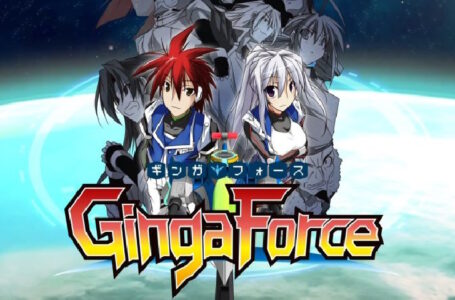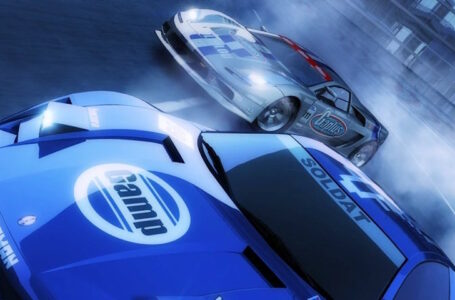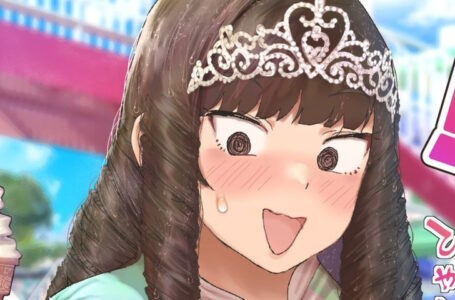2281: The Galaga invasion
A mere three years after the Galaxian-Galaga War of 2279, another conflict began. Once again referred to as the Galaxian-Galaga War (of 2281 this time), the United Galaxy was, this time, under attack from a race of insectoid aliens known as the Galaga.
Once again, the safety and prosperity of the human race was at severe risk, so the United Galaxy Space Force set up a defensive line to protect the cradle of humanity: the solar system. This was able to hold the Galaga forces back for long enough for the UGSF to finish development on a brand new fighter to replace the ageing Galaxip that had served humanity so well three years earlier.
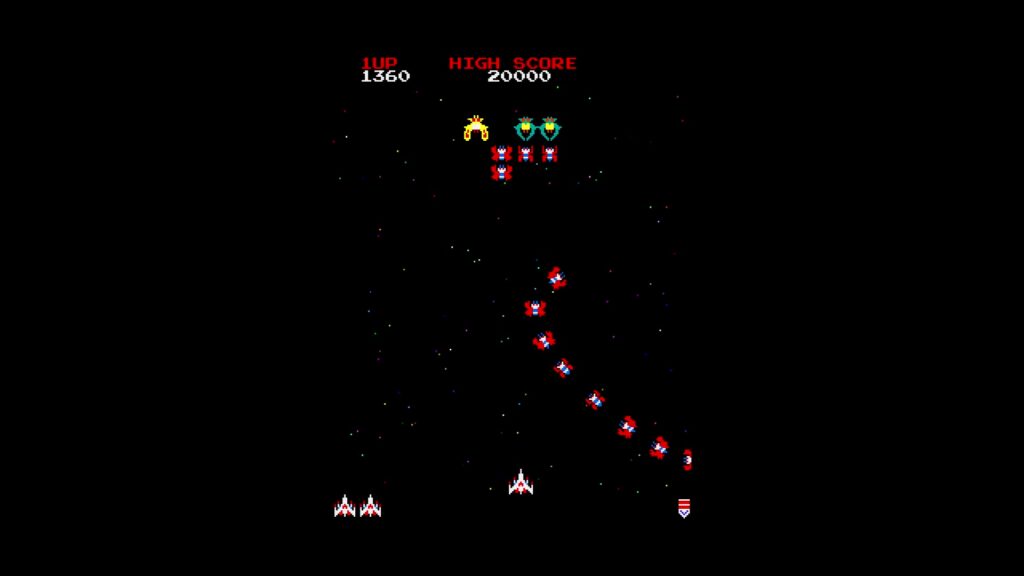
The new fighter, imaginatively known as Fighter, was equipped with a system known as Dual Fighter Mode, which allowed two capital-F Fighters to attach themselves to one another for twice the firepower. Unfortunately, it appears that some wires got crossed somewhere during development, as the only way to activate Dual Fighter Mode is to allow a Fighter to be captured by an alien, then rescue it. Apparently UGSF Quality Assurance was on holiday when this feature was implemented.
Galaga was first released to arcades in 1981, three years after its prequel Galaxian. It was originally intended as a project to help Namco clear out its surplus of Galaxian arcade boards, but ultimately ended up being made for newer hardware; the Galaga board would go on to power a number of other Namco classics, including Bosconian and Dig Dug — both of which we’ll see later in this series.
Designer Shigeru Yokoyama was given strong hints from management that he should make a game similar to Galaxian rather than a formal assignment, but he ran with the concept. After two months of planning, development of what would become Galaga began.
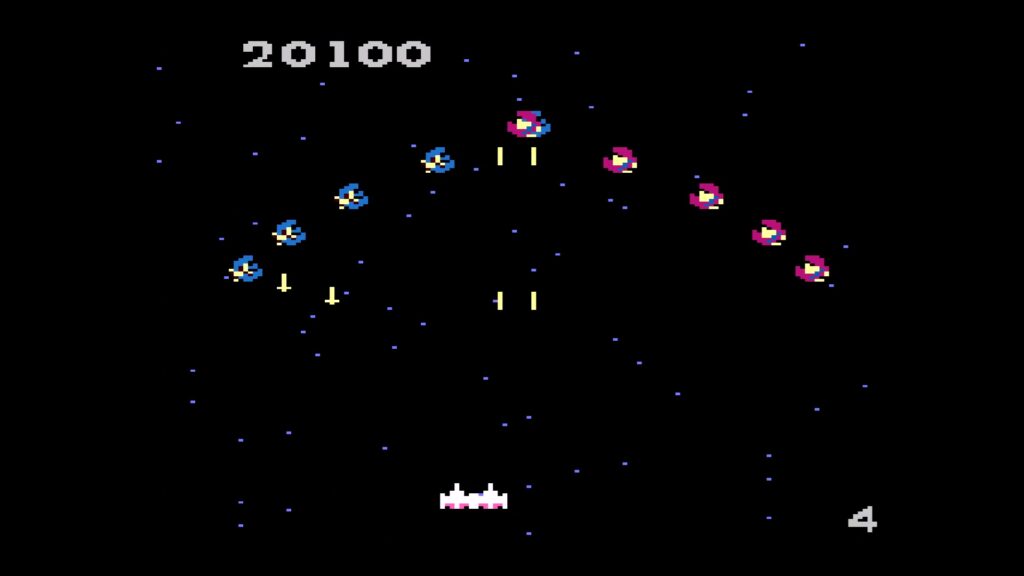
The Dual Fighter Mode system, while a bit silly in narrative terms, proved to be a popular addition, and stemmed from several inspirations. Firstly, Yokohama had seen a science fiction movie (the name of which has seemingly been lost to the ages) in which a ship was captured using a circular tractor beam, and was rather struck by the image. Secondly, he had a strong desire to create enemies with distinct attack patterns, adding more depth over Galaxian’s swooping foes.
In Galaga’s case, this resulted in the Boss Galaga enemies swooping down and occasionally emitting an easy to avoid tractor beam. By deliberately steering your ship into this tractor beam, you can allow your ship to be captured by the Galaga, then reclaim it with your next life once the Boss Galaga holding your previous ship swoops down again. You have to be careful, though; if you kill the Boss Galaga before it swoops again, or if you accidentally shoot your lost ship, it’s gone forever.
This mechanic was originally intended to be used as a means of the player gathering extra lives, but it was subsequently retooled into a risk versus reward mechanic where the player effectively gambles a life in exchange for the potential of increased firepower. It’s surprising quite how much difference the extra shots of a Dual Fighter makes — but the increased width of your player sprite also makes it quite easy to lose that extra firepower!
In building on and developing this bug rather than squashing it, Galaga helped set in place what would become an important part of shoot ’em ups to this day: strict, fixed pattern-based sequences where players can excel if they take the time to learn the choreography. While in Galaga it was a simple bonus round, most modern scrolling shoot ’em ups from the late 8-bit era onwards are heavily based on pattern recognition and memorisation, and it’s easy to see the connections to Galaga’s Challenging Stages.
Galaga’s iconic Challenging Stages, where the enemies fly in set formations, do not fire at the player and reward substantial bonus points according to how many you manage to destroy, were inspired by the intermission scenes in Pac-Man and the bonus stages from Rally-X. The exact implementation of the Challenging Stages supposedly originated from a bug where enemies would fly off-screen instead of returning to formation.
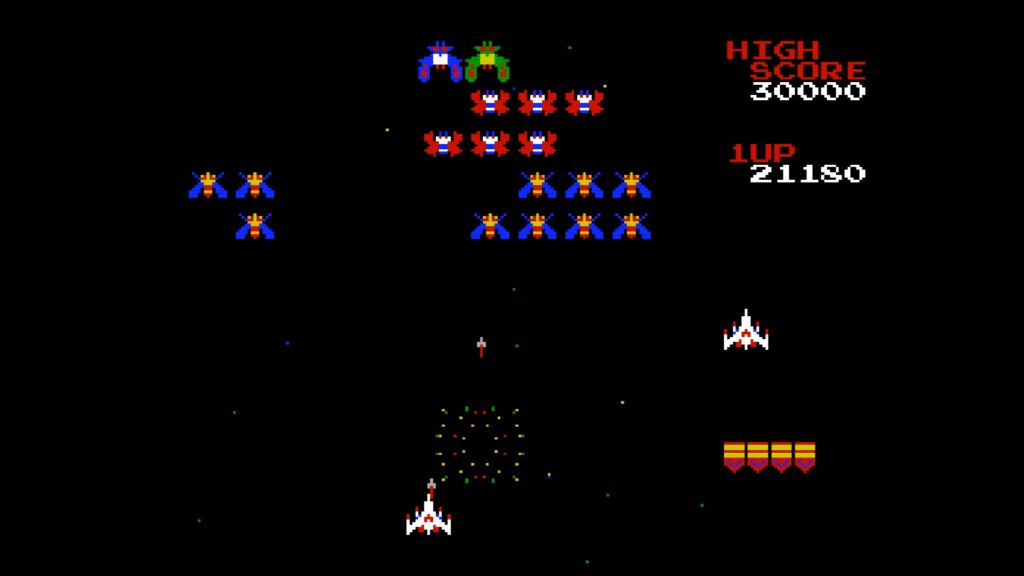
Galaga proved immensely popular around the Namco offices, but its early location tests went poorly; players were able to progress a long way on a single coin, running the risk of arcade operators passing the game up in favour of more guaranteed money-makers. As such, the game had its difficulty cranked up quite considerably, resulting in the challenging but rewarding game we know so well today.
Like Galaxian, Galaga has had a number of ports over the year — though not to quite as widespread a degree as its predecessor. The most notable ports include the 1985 Famicom version — which you can play today as part of the Namco Museum Collection 2 cartridge for Evercade — as well as the Atari 7800 version, which was part of the launch lineup for that ill-fated console.
It was also noteworthy for appearing on the loading screen of the original Tekken for PlayStation. Like how Galaxian appeared in Ridge Racer, successfully “completing” this special version of Galaga — in this case by beating 8 consecutive Challenging Stages without missing a single enemy — resulted in some unlocks for the “main game” on the disc. In this case, proving your Galaga skills would unlock a “Devil Kazuya” outfit. Kudos to anyone who can do that today without save states — though here’s a handy tip: if you press Select when your score comes up, you can try that stage again.
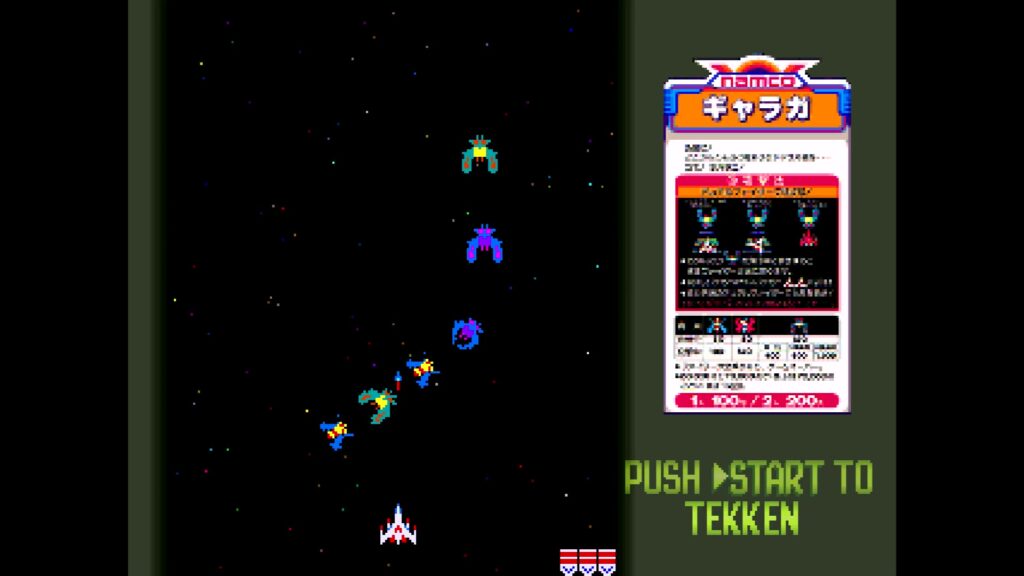
Anyway, of these ports, the Famicom version is very good; like Galaxian, the different aspect ratio of a standard TV versus the arcade version’s vertical Tate-oriented monitor makes for a slightly different experience, but the visuals, sound effects and gameplay are very true to the original. It’s a satisfying and enjoyable way to play Galaga, and perhaps slightly more accessible than the very challenging arcade version.
The Atari 7800 version may not look like much cop from a visual perspective, but it plays well. Its slightly slower pacing than the arcade and Famicom versions make it a good way to get into Galaga — and for once, the 7800’s terrible sound chip actually does a surprisingly decent job, even managing to successfully recreate Galaga’s iconic echoey music at times.
However you choose to play Galaga today, it’s still a worthwhile experience. While the inherent limitations of early ’80s fixed shooters may initially prove frustrating to those raised on later titles, Galaga is a great means of developing your shoot ’em up skills, and is regarded as an all-time classic with very good reason indeed. It holds up extraordinarily well today, and is one of those titles I suspect we’ll still be playing another 40 years from now.
Join The Discussion
Rice Digital Discord
Rice Digital Twitter
Rice Digital Facebook
Or write us a letter for the Rice Digital Friday Letters Page by clicking here!
Disclosure: Some links in this article may be affiliate links, which means we may earn a small commission if you make a purchase after clicking on them. This is at no additional cost to you and helps support Rice Digital!
- Letter from the Editor: passing the torch - June 30, 2023
- Super Woden GP 2 is looking promising - June 30, 2023
- Inti Creates is making a 32 bit-style Love Live action platformer - June 26, 2023






